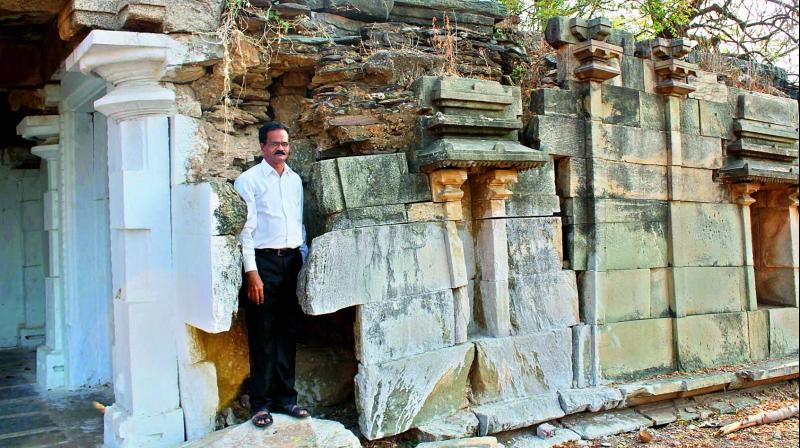Vijayawada: Kakatiya period stone temple needs facelift
Dr Reddy also observed that the temple could be returned to its original form by dismantling and re-assembling it.

Vijayawada: Mulastaneswara Devastanam, a Saivite temple built during the Kakatiya period in the 13th century, lies in a dilapidated state. According to an inscription at the temple, it was built by Hanhaya Sahini, who was the chief of the elephantry of Kakatiya Ganapatideva in 1250 AD.
The temple contains a sanctum sanctorum, an arthamandapa and a mahamandapa. It is located on the right side of the pathway that runs uphill from the Tripurantake-swara temple at Tripurantakam in Prakasam district. Hanhaya Sahini is also said to have donated lands at Redlapalli and Boyalapalli, and all his sources of income to God Mulastaneswara, in the name of his master Kakatiya Ganpatideva.
A huge neem tree has grown within the garbalaya of the Mulastaneswara Devastanam, and it has dislocated the ceiling and the dome. Dr Emani Sivanagi Reddy, an Archaeologist and the CEO of the Cultural Centre of Vijayawada and Amaravati, visited the temple and observed that it had been neglected for decades. He found that the stone layers had widened due to shrinkage of the foundation, the dome had collapsed, and the entire temple was covered in debris.
Dr Reddy also observed that the temple could be returned to its original form by dismantling and re-assembling it. He said that many of the stones remained undamaged, and they were still present at the temple site, so they could be used for restoration.
Dr Reddy has appealed to the Srisailam Devastanam to extend their services for the restoration of the temple, as they have done in the Srisailam Dam submergence area, in Kurnool and Mahbubnagar districts.

